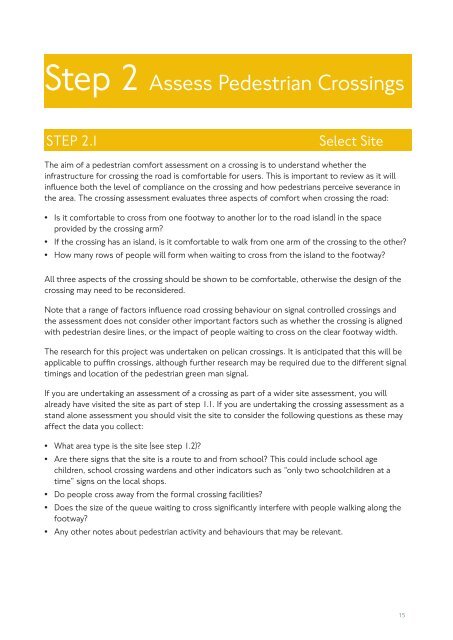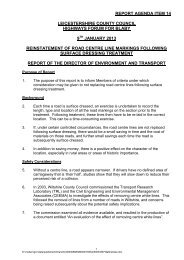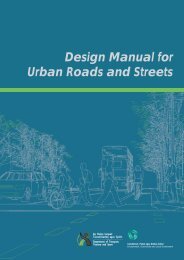Pedestrian Comfort Guidance for London
Pedestrian Comfort Guidance for London
Pedestrian Comfort Guidance for London
You also want an ePaper? Increase the reach of your titles
YUMPU automatically turns print PDFs into web optimized ePapers that Google loves.
Step 2 Assess <strong>Pedestrian</strong> Crossings<br />
The aim of a pedestrian com<strong>for</strong>t assessment on a crossing is to understand whether the<br />
infrastructure <strong>for</strong> crossing the road is com<strong>for</strong>table <strong>for</strong> users. This is important to review as it will<br />
influence both the level of compliance on the crossing and how pedestrians perceive severance in<br />
the area. The crossing assessment evaluates three aspects of com<strong>for</strong>t when crossing the road:<br />
•<br />
•<br />
•<br />
Is it com<strong>for</strong>table to cross from one footway to another (or to the road island) in the space<br />
provided by the crossing arm?<br />
If the crossing has an island, is it com<strong>for</strong>table to walk from one arm of the crossing to the other?<br />
How many rows of people will <strong>for</strong>m when waiting to cross from the island to the footway?<br />
All three aspects of the crossing should be shown to be com<strong>for</strong>table, otherwise the design of the<br />
crossing may need to be reconsidered.<br />
Note that a range of factors influence road crossing behaviour on signal controlled crossings and<br />
the assessment does not consider other important factors such as whether the crossing is aligned<br />
with pedestrian desire lines, or the impact of people waiting to cross on the clear footway width.<br />
The research <strong>for</strong> this project was undertaken on pelican crossings. It is anticipated that this will be<br />
applicable to puffin crossings, although further research may be required due to the different signal<br />
timings and location of the pedestrian green man signal.<br />
If you are undertaking an assessment of a crossing as part of a wider site assessment, you will<br />
already have visited the site as part of step 1.1. If you are undertaking the crossing assessment as a<br />
stand alone assessment you should visit the site to consider the following questions as these may<br />
affect the data you collect:<br />
•<br />
•<br />
•<br />
•<br />
•<br />
STEP 2.1 Select Site<br />
What area type is the site (see step 1.2)?<br />
Are there signs that the site is a route to and from school? This could include school age<br />
children, school crossing wardens and other indicators such as “only two schoolchildren at a<br />
time” signs on the local shops.<br />
Do people cross away from the <strong>for</strong>mal crossing facilities?<br />
Does the size of the queue waiting to cross significantly interfere with people walking along the<br />
footway?<br />
Any other notes about pedestrian activity and behaviours that may be relevant.<br />
15




